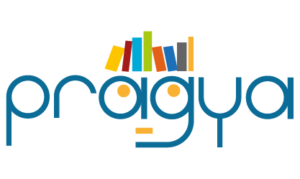As we enter the second quarter of 2017, we are highlighting five EdTech companies that have recently caught our eye. Last quarter, we focused on enterprise-level platform companies reaching mainstream adoption in higher education. This quarter, we focus on companies that stand out for innovative approaches to fostering connectedness between students, faculty, alumni, and each other.
SignalVine (Admissions and Enrollment Management: Social Recruitment and Engagement Platforms)
According to the team at SignalVine, institutional staff is typically unprepared to meet student expectations for text message communication, including the level of responsiveness, the relevance of content, and the desired frequency. It aims to simplify this type of student engagement by providing a text messaging system structured to look like a traditional email interface, as well as sample messages and best practices for student engagement.
From the student perspective, all conversations appear as a single conversation thread about any topic, from financial aid to class registration to career services. On the other end of the conversation, however, might be an entire team of institutional staff that are collaborating and selectively responding to questions from the student based on their area of responsibility or expertise.
Administrators can use the system to target groups of students based on data pulled from the student information system (SIS), learning management system (LMS), or any other support system for student affairs. Combined with dashboards and metrics designed to identify which students are opting out of conversations, enrollment management and retention professionals can also use SignalVine data as an early indicator for students who might be unplugging from the campus experience.
D2L (Student Success and Instruction: Learning Management Systems)
As an incumbent among higher education LMS platforms, D2L is always challenged to innovate its Brightspace LMS. For the Spring 2017 release, the company received more than a quarter of its new feature ideas from a community of Brightspace users, called the Product Idea Exchange. In particular, D2L’s clients have asked for more flexibility and choice of apps to connect to the core learning experience. Additionally, third parties can now use D2L’s Daylight user experience to build Learning Tools Interoperability (LTI)—connected applications that share a common look and feel with familiar, social media-like interface elements.
For institutions looking to step up cheating prevention efforts, this release also offers turnkey integration with Urkund for plagiarism detection. A determination of the originality of student work is presented right alongside the grade for that work, allowing faculty to determine whether cheating may have occurred.
In addition to improving the user experience for students, The Spring 2017 release also offers another feature that could help spur the adoption of Brightspace by more faculty: a dramatically overhauled quiz builder interface. Faculty can now preview an assessment as they construct it, allowing them to see what students will see on their exams. According to our prior LMS research, faculty satisfaction with content creation tools correlates directly to LMS client retention—and D2L enjoys nearly a 99% client retention rate.
Kaltura (Student Success and Instruction: Lecture Capture and Video Platforms)
Video content, integrated into the curriculum for both traditional and online courses, has become table stakes. While most LMS and video content creation platforms support the ability for faculty to weave video content into their classes, not all are created equal. In the latest version of its platform, Kaltura goes well beyond the usual workflow for video capture—capture, embed, and display—and provides an additional layer of tools and assessment integration.
Take, for example, video-based assessments. Kaltura starts by indexing existing videos based on content and provides transcription of the audio and slides presented in the stream. Faculty can then choose to add question prompts for the student in the middle of a video stream, which allows students to reflect and answer a quick assessment item. As these tools are integrated with the LMS using the LTI standard, faculty can send the outcomes of video-based assessments to the course grade book.
Kaltura is also staunchly committed to the creation of standards that support the new ways faculty use video content in the classroom: it is a charter partner in creating the IMS Global Learning Consortium standard for OpenVideo capture. This standard will ensure that video content, regardless of source and management system, will be tagged, transcribed, and portable between all learning environments that an institution might choose.
Pragya Systems (Student Success and Instruction: Student Success and Retention Solutions)
Many institutions want to enable their students to create personalized learning pathways, ones that allow them to leverage a broad range of content, courses, and assessments, and to develop relationships with advisors. Likewise, many students would like to understand precisely how best to improve their chance of success. There are, however, two significant challenges to these goals: the modular nature of the underlying solutions, such as LMS platforms and massive open online courses (MOOCs), and a lack of data to show students the best path to take.
One product that seeks to help overcome this challenge is Pragya Systems. With its two product components—learning streams and content management—Pragya aims to empower students to develop, maintain, and share personalized learning roadmaps, calling on a broad range of content and course materials.
Via Pragya’s IBM Watson-powered analytics engine, students can design pathways on more than a simple set and sequence of courses. Drawing on a wealth of course, social, and other data, students can get a fuller sense of how their choices may impact their chances of success and make a more informed decision about their next steps. Although Pragya is still a relative newcomer to higher education, we see great potential in its ability to help institutions provide personalized learning experiences.
GiveCampus (Advancement: Crowdsourcing Platforms)
Recently, Eduventures met with Kestrel Linder, Chief Executive Officer of GiveCampus, to learn more about its crowdfunding solution. Building on the success of similar platforms in other industries, such as Kickstarter and GoFundMe, GiveCampus now has over 200 institutional clients and is growing. More than just a platform for organizing annual class gifts for alumni, the GiveCampus tool allows any campus group to raise funds in support of worthwhile projects like sports boosters, giving days, class gifts, and student government initiatives.
By putting its platform directly in the hands of student organizers—while still being fully endorsed by the institutions—the need for funding can be communicated to donors by those who will directly benefit. With a speed of implementation of just two days, these groups can launch a campaign in response to emerging needs. We believe it is another promising tool, alongside a powerful constituent relationship management (CRM), to help personalize campus fundraising efforts.
Our quarterly posts on Vendors to Watch draw from continuing coverage of the Eduventures Higher Education Technology Landscape. We choose noteworthy companies among the 40-plus market segments we feature. If you are aware of a technology solution that could have a substantial impact on teaching and learning in higher education, please let us know so that we can include its profile in a future post.






